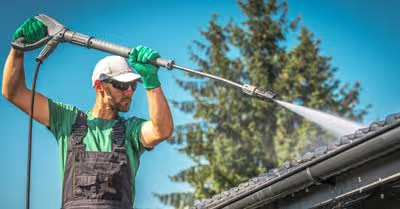Table of Contents
How Accurate Are Zillow Estimates?
Zestimate accuracy varies from house to house. When Zillow is provided with more information, it can certainly make a more accurate estimate.
If there has been a decent number of recent transactions in the area, Zillow is likely to be pretty accurate.
If there has been little movement in the area, Zillow would not have the most up to date documentation and information.
Zillow makes it clear that its estimates are a starting point, not an appraisal.
When analyzing the median error of all estimates compared to the actual sale amount, Zillow’s median error is 1.9% for on-market homes and 7.5% for off-market homes.
Half of Zillow’s estimates are within 2% of the selling price. For most of the major real estate markets, Zillow estimates are within 10% of final sale prices more than 95% of the time!
Does Zillow Ever Update the Algorithm?
Since its release in 2006, Zillow expert researchers and engineers have output several major algorithmic updates and improvements to increase accuracy.
For example in 2006, Zillow updated information monthly, and now it is updated daily if not in real time!
Some of its newest additions include listing information in real-time, and the “see” your home feature that uses artificial intelligence to factor in quality and curb appeal.
Are Zillow Estimates High or Low?
Although Zillow aims to be accurate, the Zillow estimates calculated can be too high or low.
The sire does not point to leaning to one side of the spectrum or the other, just admits to the possibility of significant differences from the actual value price.
Of course, if you read through the online comments, most complaints are about the Zestimate being too low.
How Can I Get My Zillow Estimate Higher?
Sites like Zillow are often the first stop for potential home buyers to see what’s on the market. If your Zillow information is too low, potential buyers may be reluctant to pay the higher asking price.
Seeing as how that is no seller’s goal, you may be asking yourself “how can I increase my Zillow estimate?”
Zillow depends on users to claim their houses and add in additional and up to date information while correcting any inaccuracies.
Zillow updates daily, so if any of the additional information a human added changed the value of the home, it will be updated on the site very quickly.
Upgrades to your home, like expansions or renovations, would definitely increase the home’s estimated value on Zillow.
You must have a Zillow account to claim your home and update the information.
Some great informational sections on your home listing to focus on to increase the Zestimate is the included amenities sections.
By checking off that the property has in-unit washers and dryers, a pool, and dishwashers etc, you are adding tags to your home that buyers search for.
You should also write the description of your home in a voice that appeals to your buyer’s needs.
If you live in a city that is commuter heavy, include phrasing that mentions proximity to trains and buses, walking distances, and so forth.
Writing move-in ready and mentioning the great local schools will also attract many buyers.
Zestimates Should Viewed As A Starting Point, Not Appraisal
All throughout Zillow’s site, this phrase is repeated.
Market values change constantly and artificial intelligence mixed with some human input can not realistically be perfect.
When a potential buyer sees an amazing “deal” on a listing they love, they get excited and then feel like they are getting scammed when the buyer's asking price is a higher, but market value appropriate amount.
When an owner sees that their home is estimated to sell for a lower price than they thought, they will be very discouraged from selling.
When an owner sees that their home is listed for a much higher price than they assumed the market value was, they would obviously be very excited and hopeful about a sale that high. They will be very reluctant to accept offers that are the actual price because they have made their mind up to only sell for that high amount.
When a potential buyer sees a home they are interested in for a price way out of their budget, they likely will skip past the listing if it was not already filtered out of their search results.
This could cause homeowners to lose potential clients who may have been willing to pay the market value of the home.
How To Get More Views On Zillow And Rank Higher
More exposure to your listing increases the chances of selling to the perfect buyer or renter.
But how can you outrank the other thousands of listings? Use Zestimate factors Zillow filters and the algorithm to your advantage!
Great Photos
This is a pretty obvious step but can get missed easily.
Take your time when taking pictures of a listing. Wait for good lighting, make sure the shots are clear, get flattering angles, and highlight the home’s best features.
Try to take about 20 - 25 thought out and strategic pictures. These pictures will be doing what the words in your listing can not.
Some listing pictures are over-edited and oversaturated, totally changing the colors of the home and making it look unwelcoming and fake. Aim for minimal editing if any at all.
Don’t forget to take pictures of the exterior and surroundings of the home!
If possible, get some pictures during the day, and at night.
Well Written Descriptions
After the photos grab the buyers attention, they will want to read more about the details of the home.
Use the description to really draw the target audience in and help them imagine living in the home.
Describe how they will feel taking a jog around the neighborhood and entertaining their family and friends on the patio or raising their children so close to interactive museums and fantastic school districts.
Try to avoid cliches like “charming” and “must-see.” It is more beneficial to write about the features it has without too many additional adjectives.
Describe the granite tabletops, floor to ceiling windows, and stainless steel appliances.
Be Upfront
Do not fabricate or overly embellish the home. Telling the truth will get you more views, believe it or not.
It will also save you time in dealing with a potential buyer who drops out because they did not know something about the home.
If your home needs renovations, is being sold as-is, is a fixer-upper, or is best suited for a smaller household say just that!
There is a market for just about every kind of home, so do not think being honest will discourage viewers from buying.
Update As Much Information As Possible
Zillow is heavily dependent on the information humans put in to aid the artificial intelligence algorithm.
Realtors encourage owners to claim the home to input extra information. Updating this information makes the Zestimate more accurate.
It also gives the potential to buy the home’s actual history and story. More information makes the listing look professional and honest.
By filling out the information, you are trying to show why you think the home is worth what you think it is.
By claiming the listing on Zillow, a “what I love about the home” section becomes available. This allows sellers to add an even more personable touch to the listing.
Recent Articles
















